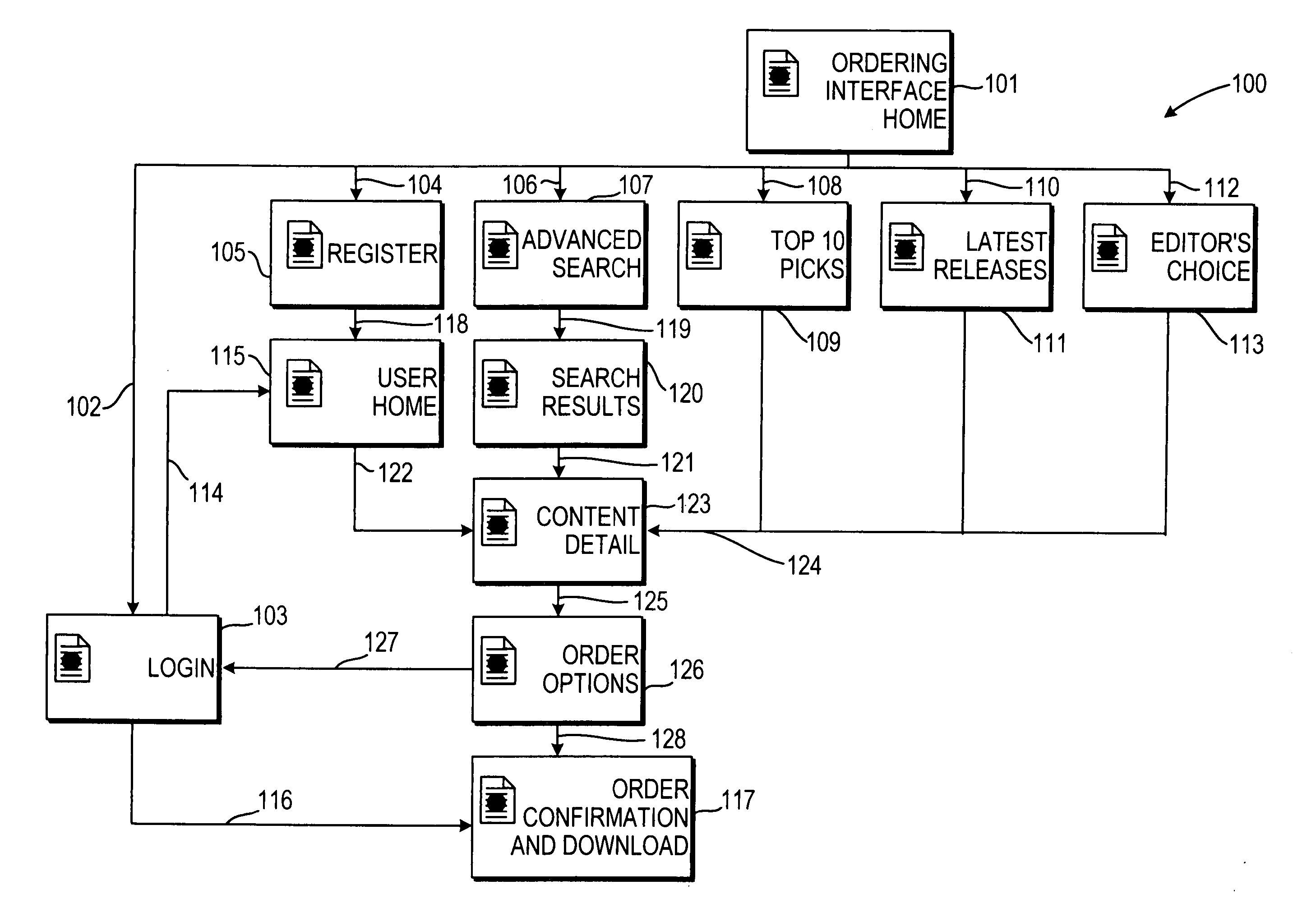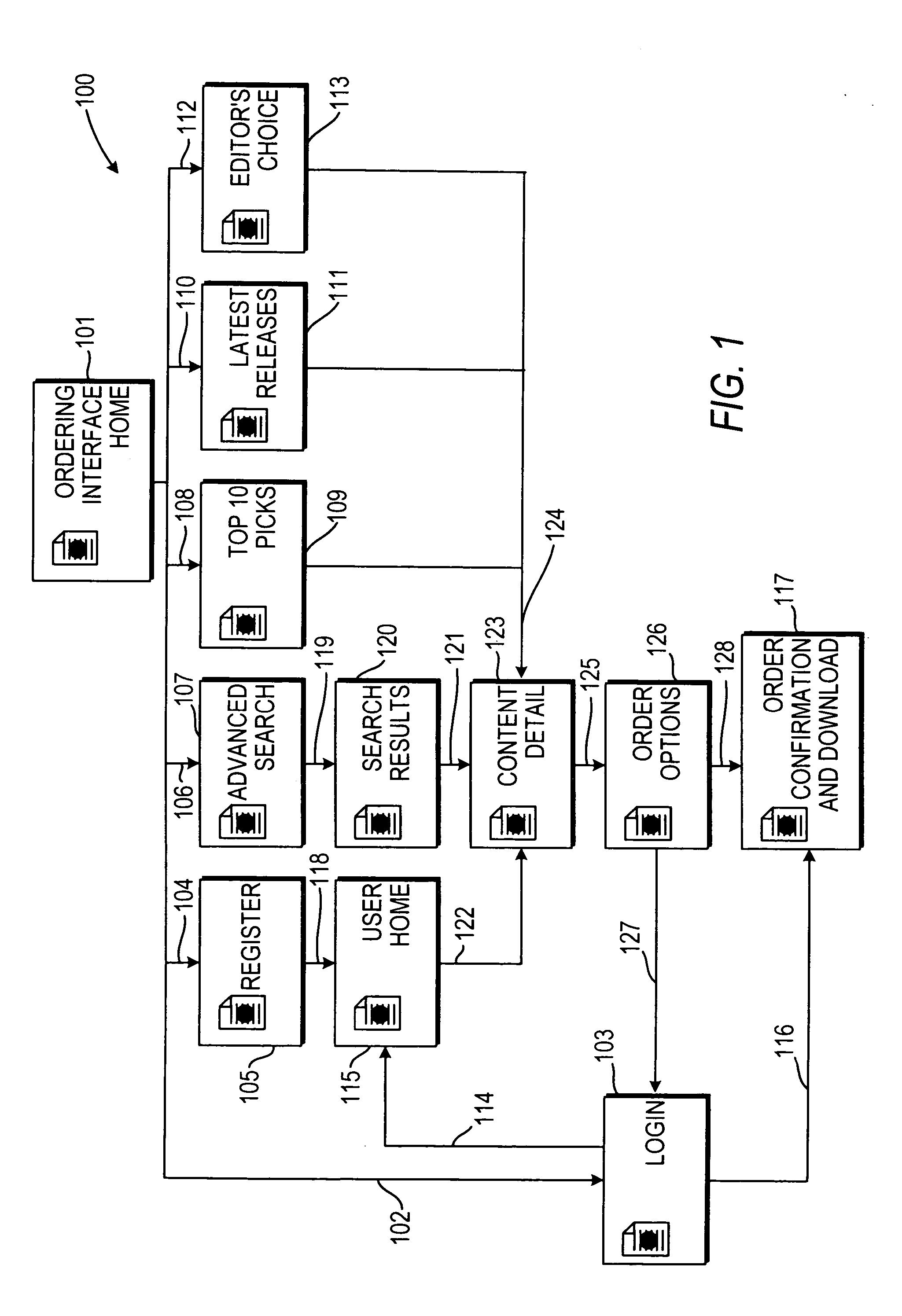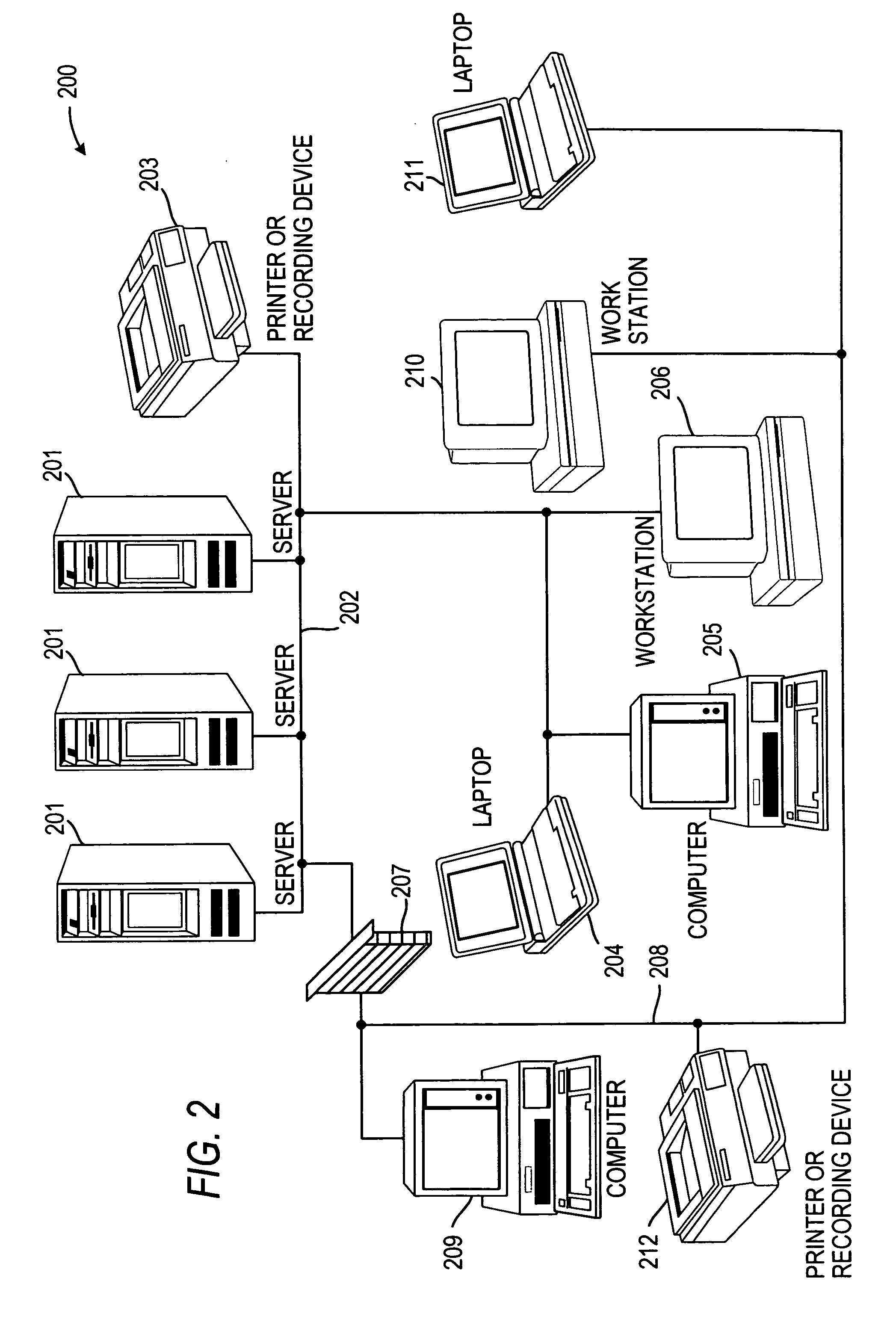Digital asset data type definitions
a digital asset and data type technology, applied in the field of digital asset data type definitions, can solve the problems of reducing reducing the delivery time of digital assets, and requiring a significant amount of time to locate a particular asset, so as to reduce the search reduce the delivery time of digital assets, and facilitate and economically manage the
- Summary
- Abstract
- Description
- Claims
- Application Information
AI Technical Summary
Benefits of technology
Problems solved by technology
Method used
Image
Examples
example 1
[0059]
[0060]
[0061]
digitalAsset (assetMetadata, movieTitleMetadata?, rightsMetadata,transactionMetadata?, Photo*, Promo*, Audio*, Movie*,)>assetMetadata(#PCDATA)>assetMetadataAssetTitleCDATA#IMPLIEDthis asset package has a nameAssetCommentsCDATA#REQUIREDcomments / description about the assetgroupAssetVersionCDATA#REQUIREDversion, major+minorAssetCreateDateCDATA#REQUIREDcreate date>movieTitleMetadata(#PCDATA)>movieTitleMetadataPIDCDATA#REQUIREDproduct id; link to PRIME.PPRODVIDCDATA#REQUIREDPEG--version id; LINK TOprime / pversion_generalRIDCDATA#REQUIREDrights id, for FUTURE useGenreCDATA#REQUIREDPEG genre, may be several genres [ ]FUT make multiple elements?RatingCDATA#REQUIREDPEG MPAA informationmovieTitleLongCDATA#REQUIREDPEG the movie title, full name with allpunctuationmovieTitleShortCDATA#REQUIREDPEG abbreviated movie title, suitable forcomputer filenames; no blanks, specialcharsmovieTitleAKACDATA#IMPLIEDalternate movie name; different countriesStudioProviderCDATA#IMPLIEDPEG--copyr...
example 2
[0063] (filename: sample.xml)
[0064]
[0065]
[0066]
[0067]
[0068] Comments=“Soldiers talking to man”>
[0069]
[0070]
[0071]
[0072] Talent=“Unknown”>
[0073]
[0074]
[0075]chaos—1_t.jpg
[0076]
[0077]
[0078]
[0079]
[0080]
[0081]
[0082]
[0083]
[0084]
[0085]walls—2_t .jpg
[0086]
[0087]
[0088]
[0089]
[0090] Comments=“Close up portrait of Sarah JessicaParker”>
[0091]
[0092]
[0093]
[0094]
[0095]
[0096]sex_city—2_t.jpg
[0097]
[0098]
[0099]
[0100]
[0101]
[0102]
[0103]
[0104]
[0105]
[0106]walls—5_t.jpg
[0107]
[0108]
[0109]
[0110] XSL operates on XML search output. The output from XSL may be either HTML or XML both with CSS. Known software engines, such as, for example, a software engine known as XT developed by James Clark (see http: / / jclark.com / xml / xt.html for more details), can be used to convert XML into HTML. A sample command for doing such is: C:>XT sample.xml css.xsl output2.xml. This comma...
example 3a
[0112]
[0113]<xsl:stylesheet version=“1.0”
[0114] xmlns:xsl=“http: / / www.w3.org / 1999 / XSL / Transform”>
[0115]
[0116]
[0117]
[0118]
[0119]
[0120]PID:
[0121]Asset Title:
[0122] select=“Assetmedatada / @AssetTitle” / >
[0123]Comments:
[0124] select=“Assetmetadata / @Comments” / >
[0125]Resolution:
[0126] select=“Photo / Photometadata / @Resolution” / >
[0127]Talent:
[0128] select=“Photo / Photometadata / @Talent” / >
[0129]
[0130]
[0131]
[0132]
[0133]
[0134]
[0136] href=“{concat(‘full_’,ancestor::Asset / Content)}”><img
[0137] src=“{ancestor::Asset / Content}” border=“0” / >
[0138]
[0139]
[0140]
PUM
 Login to View More
Login to View More Abstract
Description
Claims
Application Information
 Login to View More
Login to View More - R&D
- Intellectual Property
- Life Sciences
- Materials
- Tech Scout
- Unparalleled Data Quality
- Higher Quality Content
- 60% Fewer Hallucinations
Browse by: Latest US Patents, China's latest patents, Technical Efficacy Thesaurus, Application Domain, Technology Topic, Popular Technical Reports.
© 2025 PatSnap. All rights reserved.Legal|Privacy policy|Modern Slavery Act Transparency Statement|Sitemap|About US| Contact US: help@patsnap.com



